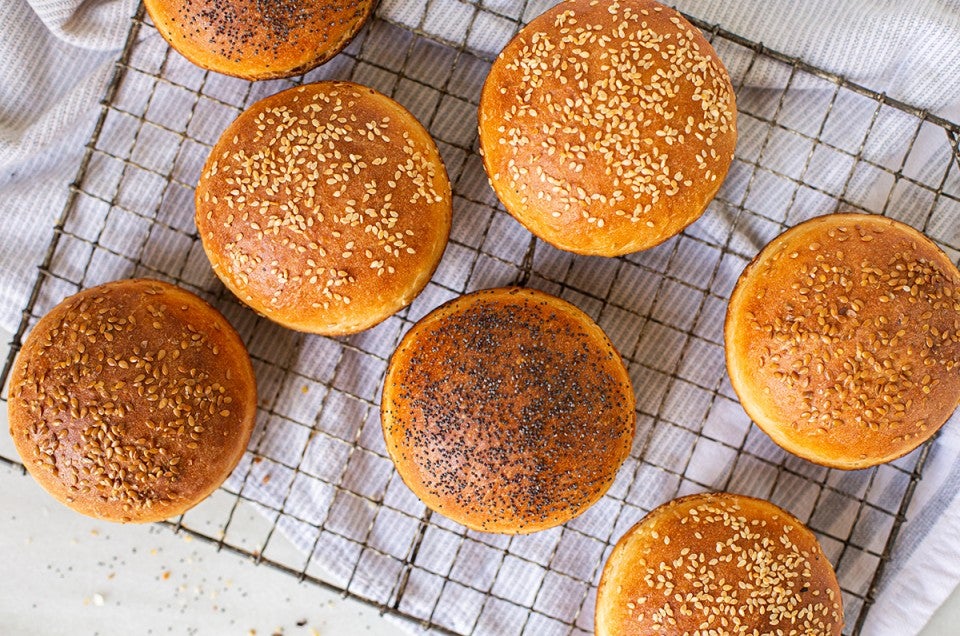


Some things are worth making from scratch. And burger buns? They’re absolutely one of them. When properly made, homemade burger buns are soft and pillowy, yet sturdy enough to support a burger or sandwich filling of any kind. We've got 10 key tips you need to know if you want to make perfect burger buns with light (yet sturdy) texture. With these tips, you'll learn how to make hamburger buns that will wow a crowd and win the cookout.
Our Hamburger or Hotdog Buns recipe is a year-round favorite of many King Arthur employee-owners, and we find ourselves baking it even more frequently during cookout season.
What’s to love? Its enriching ingredients, simple instructions, and generous yield. And of course, the buns’ tender, fluffy texture, to name a few things.
And better yet — you only need this one recipe to make either homemade hamburger buns or hot dog buns. Transform it into whatever shape you please using this one base dough.
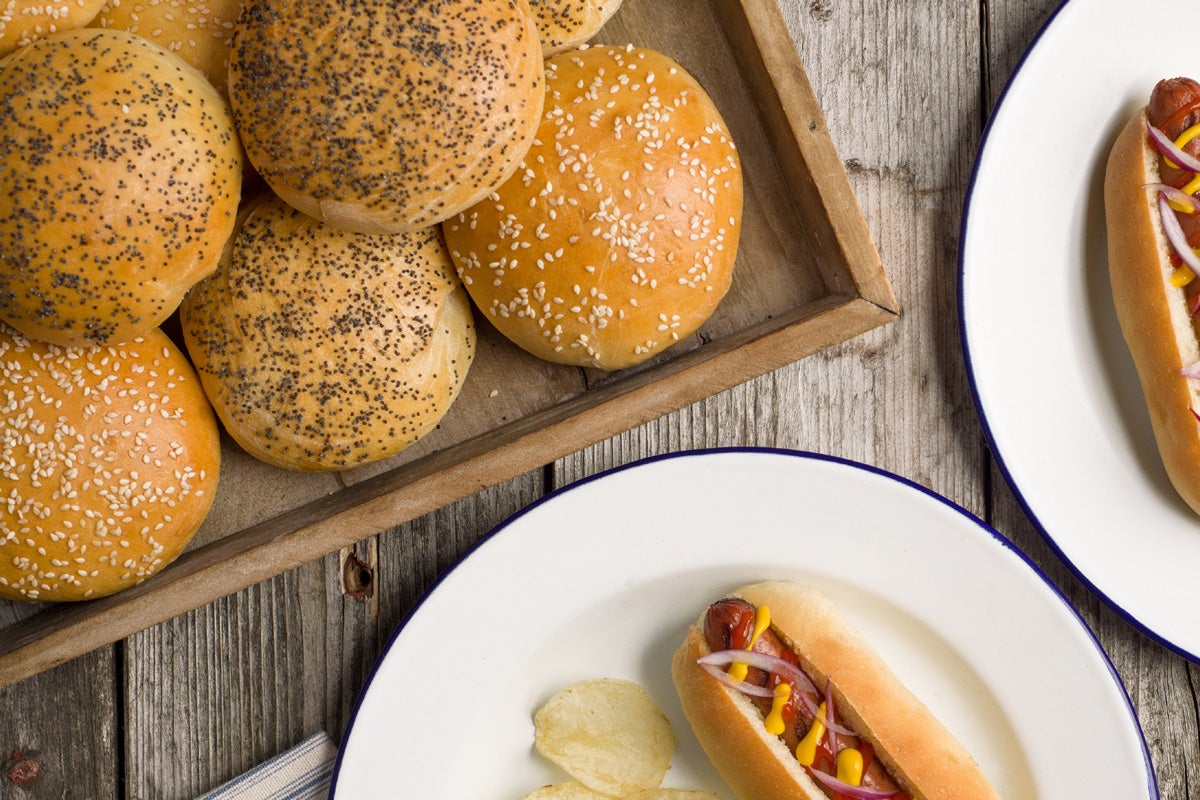
Today we’ll focus on tips and tricks to make the best homemade burger buns, but keep this recipe in your back pocket for when you want to make homemade hot dog buns too!
If you simply follow the instructions in our Hamburger and Hot Dog Buns recipe, you’ll end up with buns that you can use to build the sandwich of your dreams.
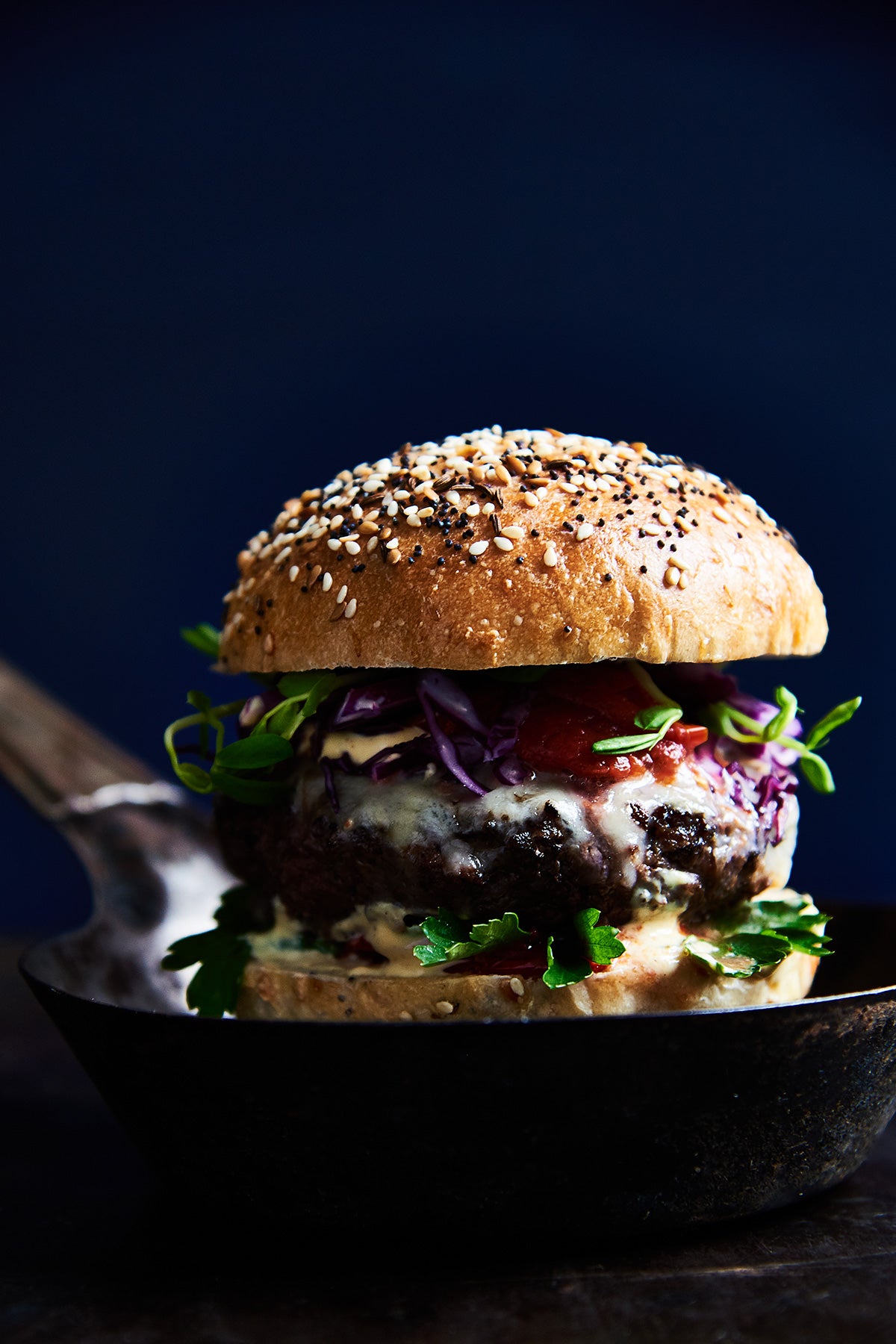
Better yet, if you’re the kind of baker who likes to take things a step further, use these 10 tips to knock this recipe out of the park.
Tangzhong is an Asian bread baking technique that involves cooking some of the flour and liquid in the recipe together before mixing up the dough. This process transforms the starches and hydrates the dough. It makes yeast breads (including buns) super tender and moist, and also helps them stay fresh longer.
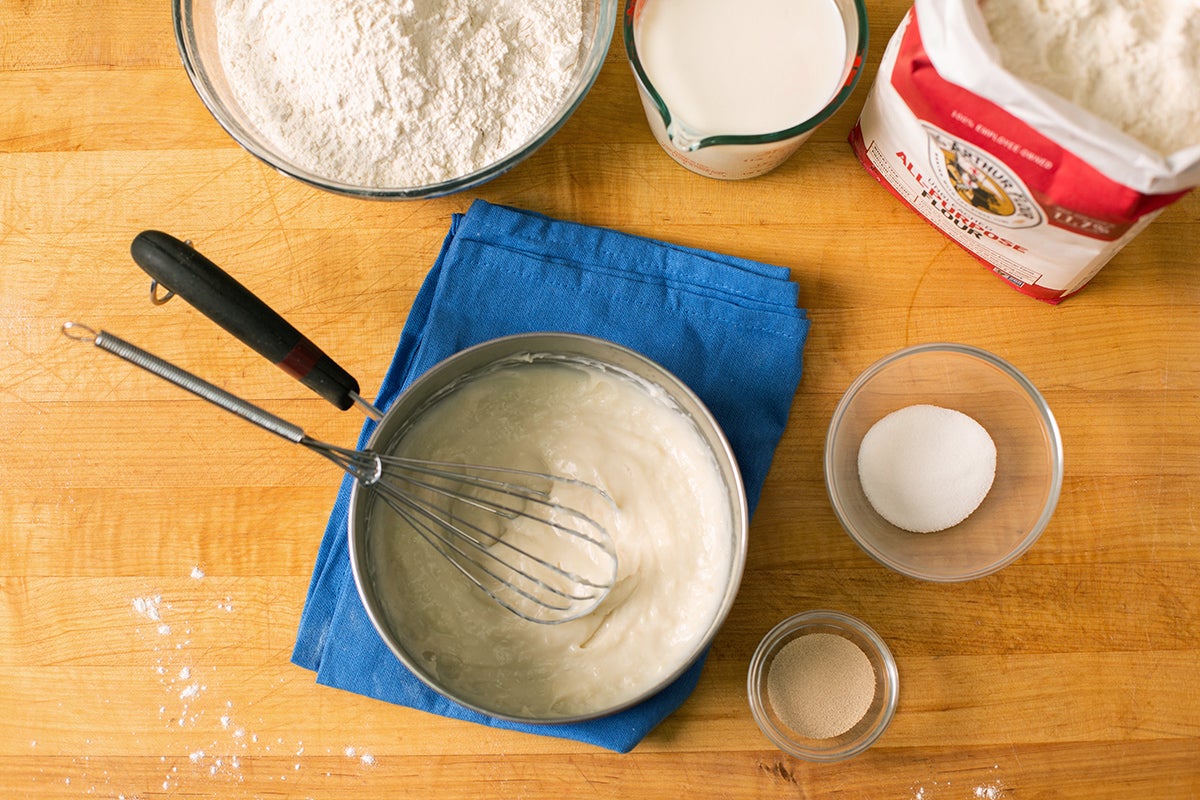
You can learn more about this method from my fellow blogger, PJ, in this post: Introduction to tangzhong.
If you’d like to give this technique a try and make extra-soft burger buns, check out the second baker's tip on the Hamburger or Hotdog Buns recipe page for details. You can also try converting your favorite burger bun recipe by following the guidelines provided in our post, How to convert a bread recipe to tangzhong.
If you’re looking to boost the flavor of your homemade burger buns, consider replacing half of the all-purpose flour with whole wheat flour.
For a more pronounced whole grain flavor, opt for traditional whole wheat flour. Or, if you’re easing into baking with whole grains, choose golden wheat flour for a subtler flavor and lighter color.
I like using 2 cups (227g) of golden whole wheat in place of 2 cups (240g) of all-purpose flour in our Hamburger or Hotdog Buns recipe. This swap results in buns that are tender, slightly nutty in flavor, caramel-colored, and hard to resist.
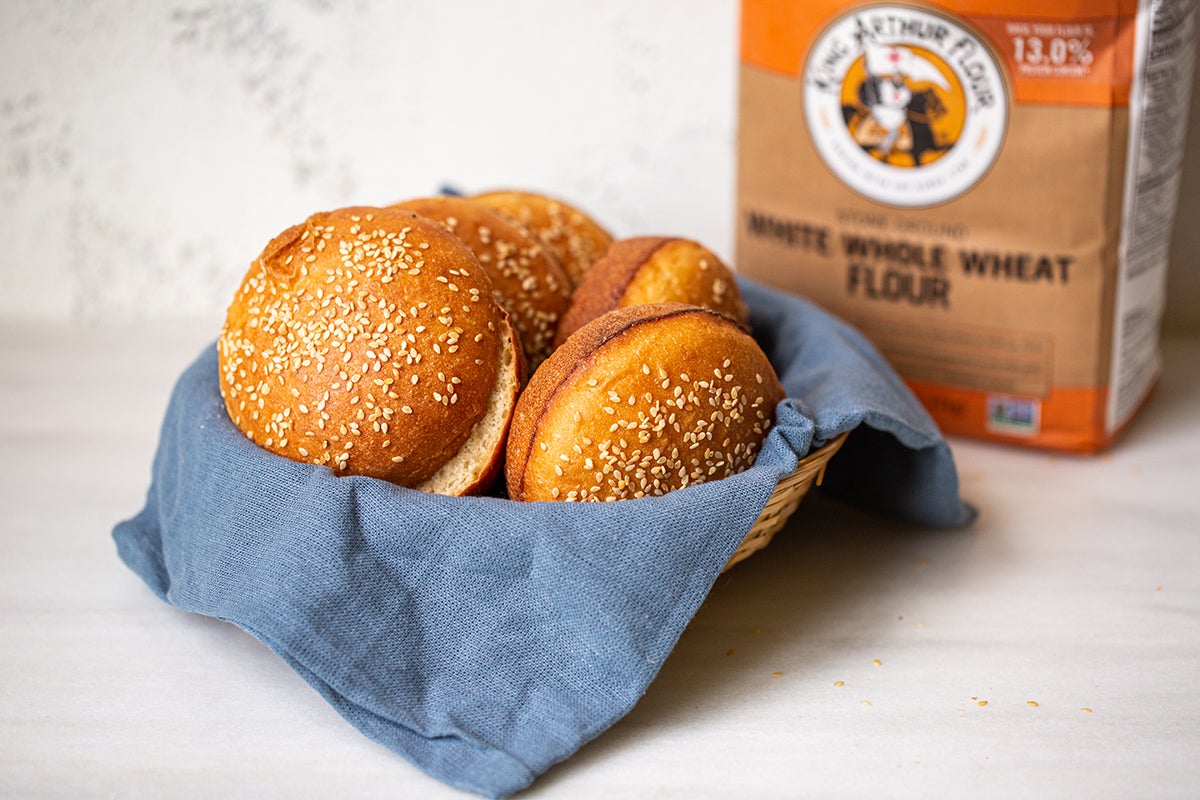
Dividing the dough into individual buns is a critical point in any hamburger bun recipe. Shape your dough too small and your burger might fall out, or the bun might crumble. Too large and you’ll end up with a sandwich that feels like it's mostly bread.
So what’s the perfect size?
For standard-sized burger buns, use about 85g to 100g of dough per bun. (If you’re looking for a more substantial serving, opt for 100g per bun.)
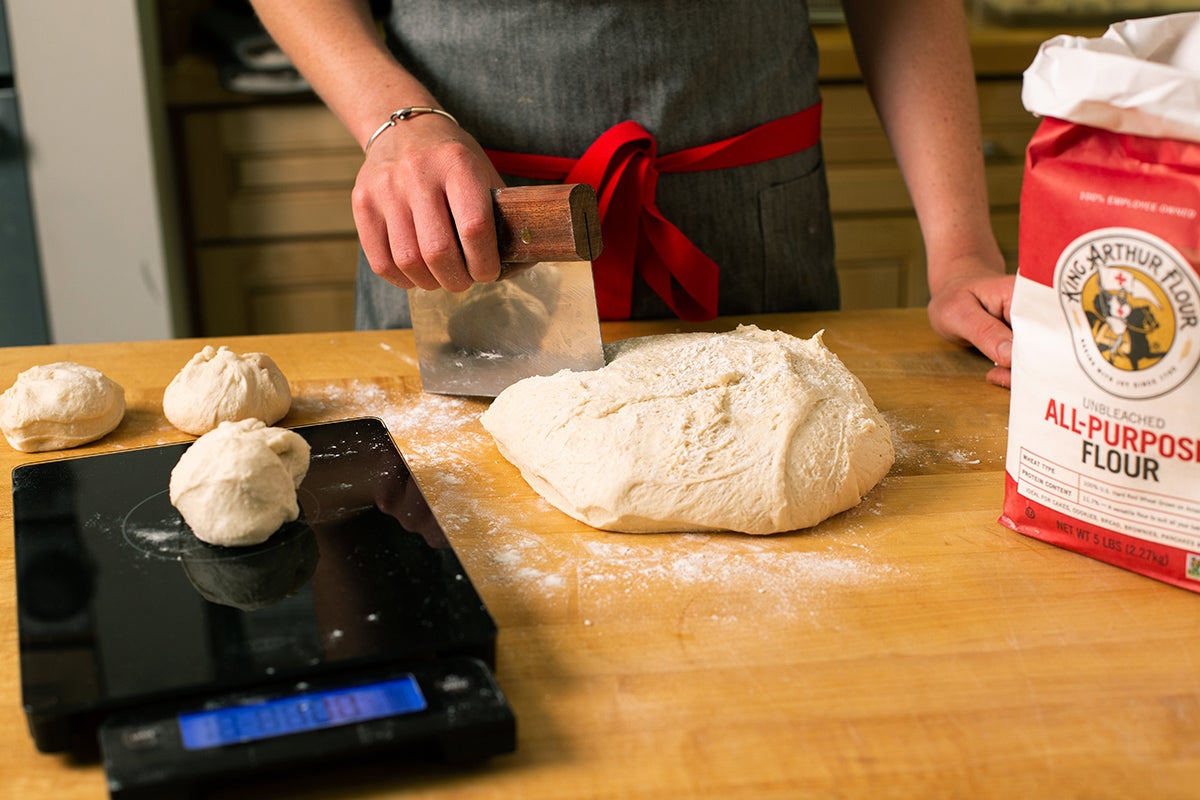
At some point, you might want to make something other than a regular-sized burger bun — say, slider buns or buns that can support quarter-pound burgers. In those cases, you'll want to adjust the amount of dough you use.
Use these guidelines to help divide your dough into the right portions:
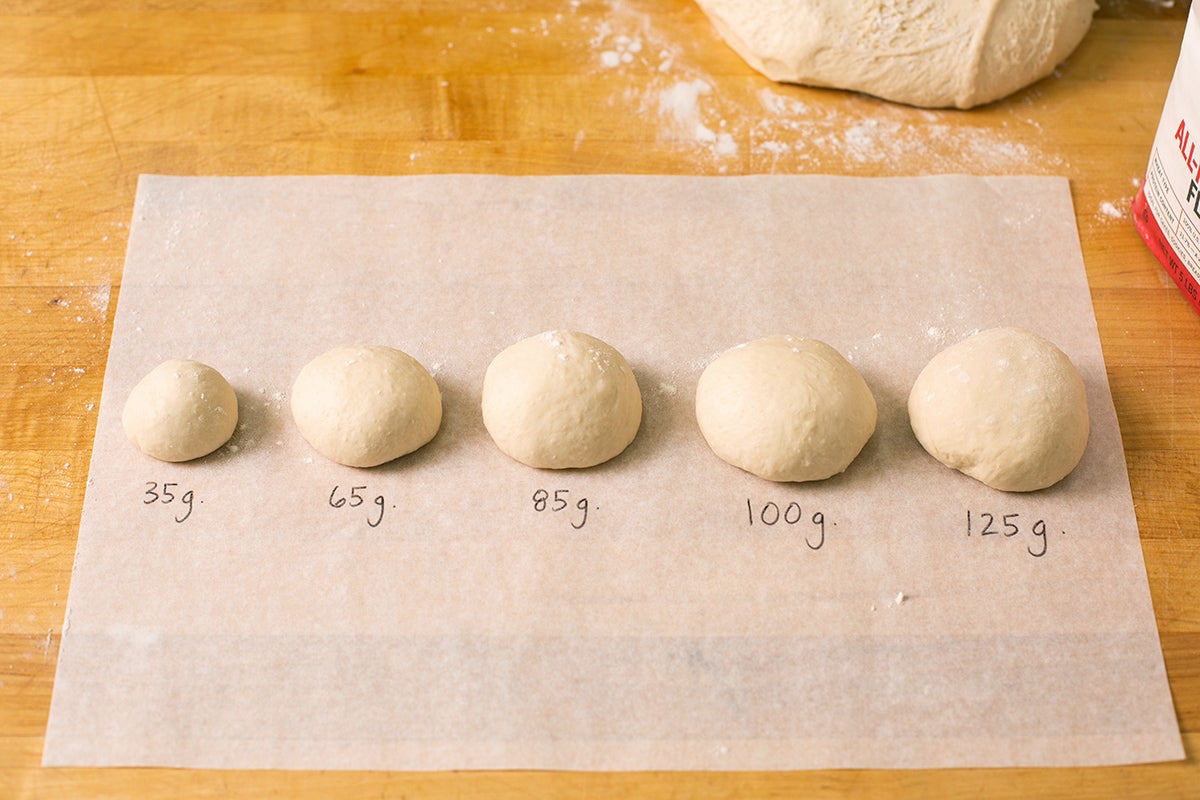
Remember that the dough will almost double in size after rising and baking, so make your dough balls smaller than you might initially think they should be. They'll end up being just right.
You have options when it comes to pans for baking your homemade burger buns.
If you want perfectly shaped buns, use our Hamburger Bun and Mini Pie Pan. This pan makes buns that are perfectly round and rise high. (Bonus: You can do a lot more with this pan than just make burger buns. See our post How to use a bun pan for inspiration.)
Don’t want to use a specialty pan? That’s OK — here are some additional options:
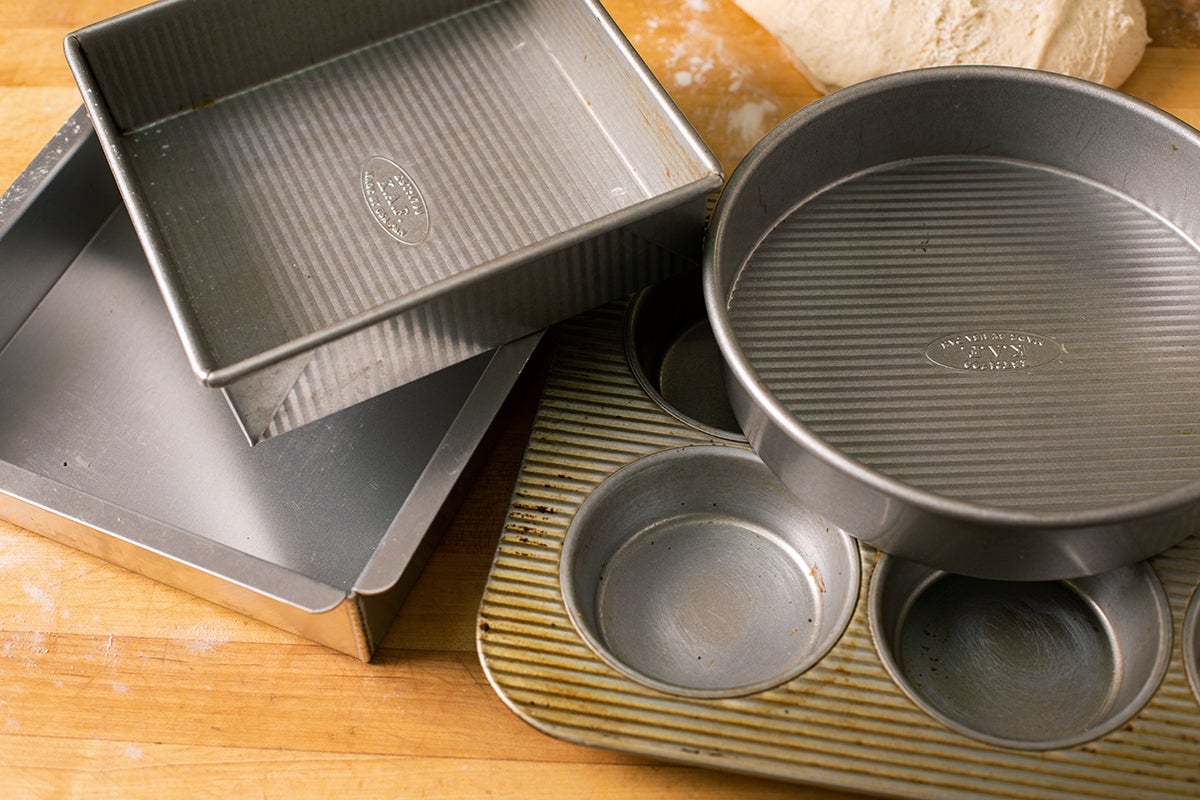
The way you arrange the dough in your pans will affect your final product. If you place the buns about 1” apart from each other, the edges of the buns will touch slightly after rising. This creates a tear-and-share effect, and the final buns will have soft edges.
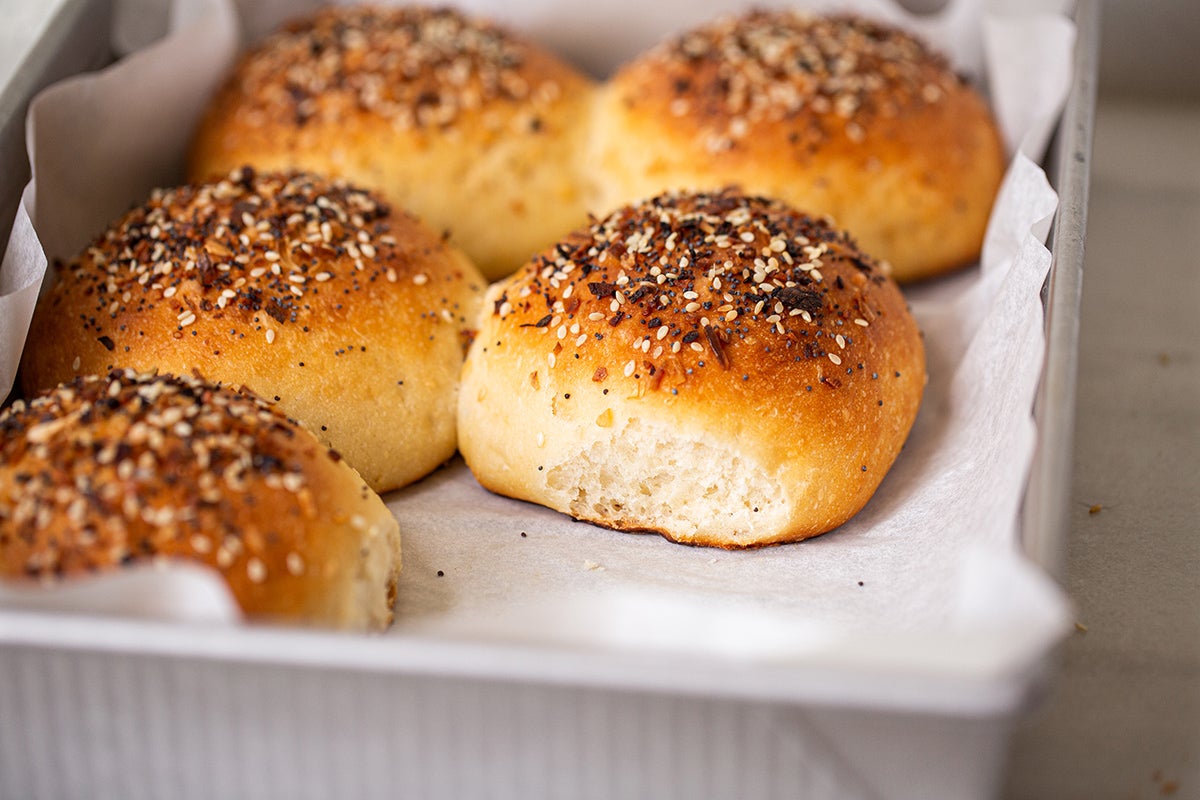
If you want the edges to be golden brown, leave at least 3” between the buns so they don’t come together during baking. The final buns will be nice and round, as well as a bit sturdier than the soft-sided version.
After the burger buns are shaped and proofed (fully risen), egg wash the tops of the buns right before baking. This will make the buns shiny and deep golden brown, and will help your topping stick.
To make a standard egg wash, mix 1 large egg with 1 tablespoon of water and a pinch of salt. (The salt helps break up the protein strands and makes the mixture more homogeneous.) Gently brush the tops of the risen buns with the egg wash.
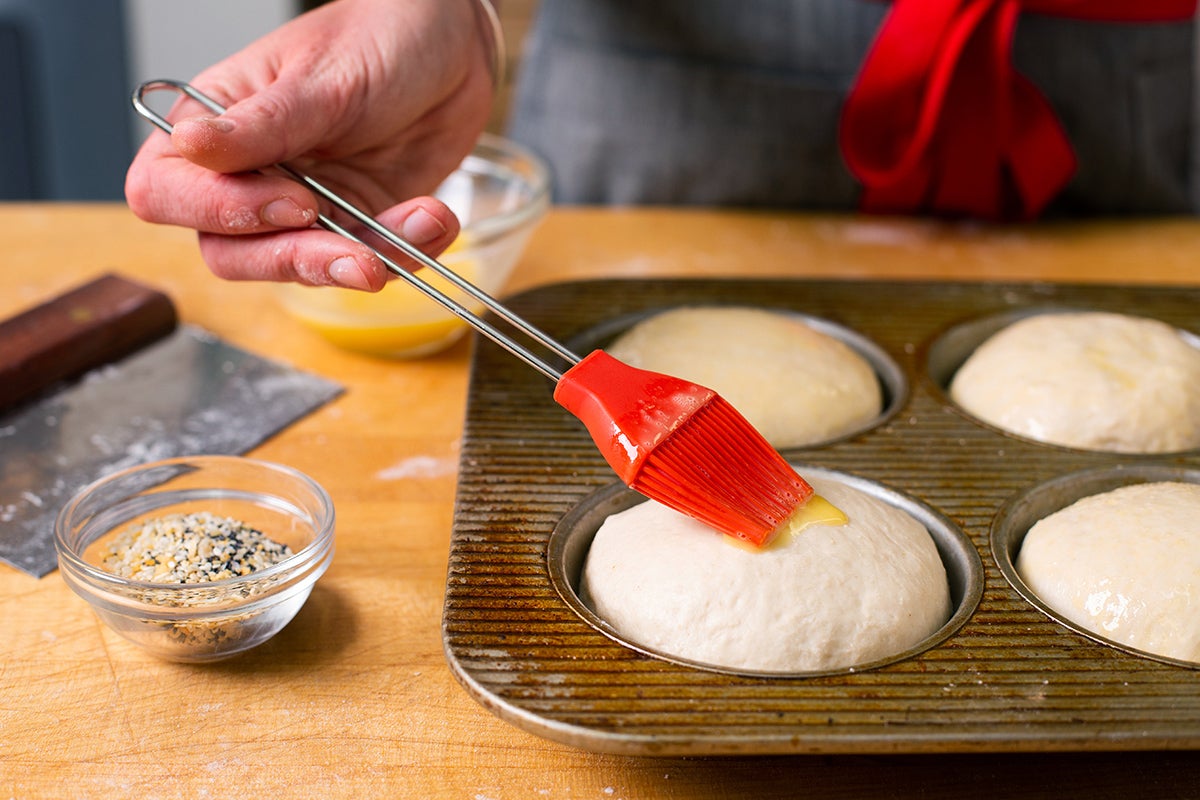
After brushing the buns with egg wash, sprinkle the topping of your choice evenly over the buns. I like using Everything Bagel Topping, but sesame seeds, poppy seeds, and flax seeds are all fantastic options too.
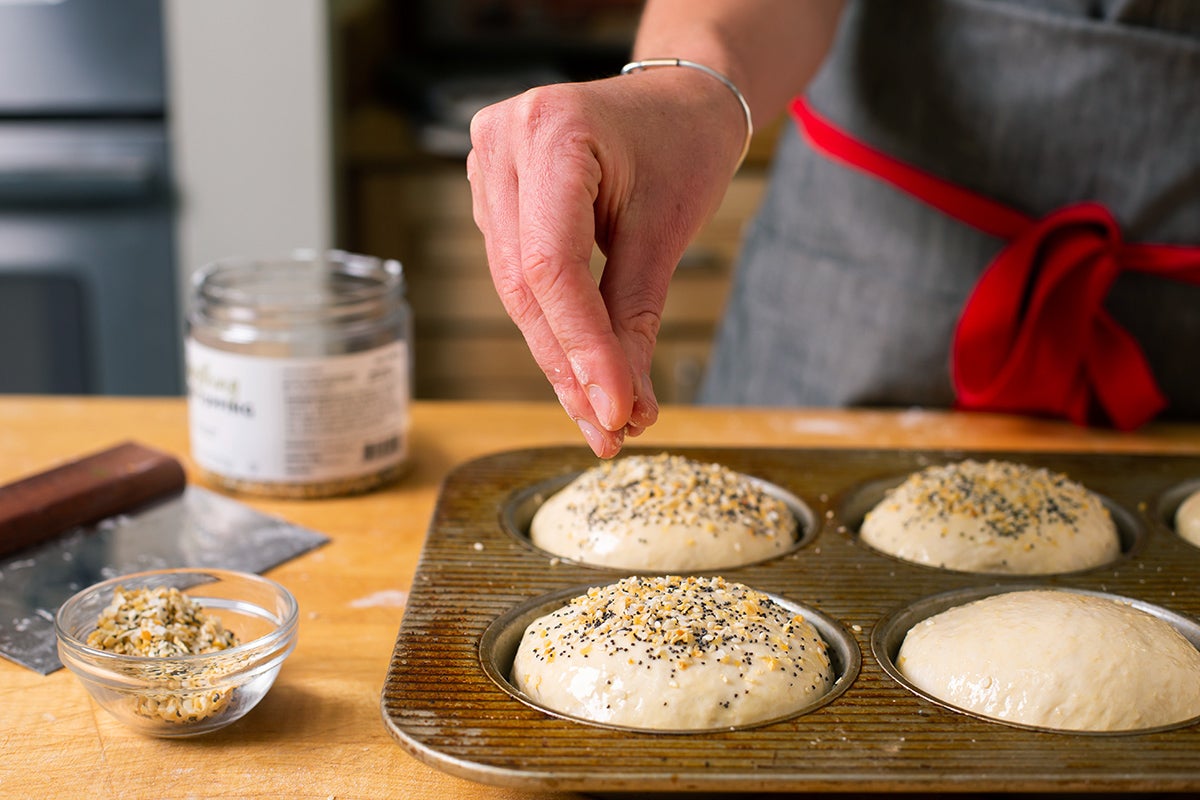
Without the egg wash and seedy topping, homemade burger buns look lackluster, so I encourage you to not skip this step.
The buns will come out of the oven looking beautiful and your kitchen will smell amazing — promise! Don’t get distracted by the tantalizing smell or the urge to take an Instagram picture before you remove the freshly baked buns from the pan.
If you let the hot buns sit in the pan, their bottoms will steam and become soggy. This makes for fragile burger buns that are likely to fall apart when split and filled.
Take the buns out of the pan and allow to cool completely on a rack before slicing or serving.
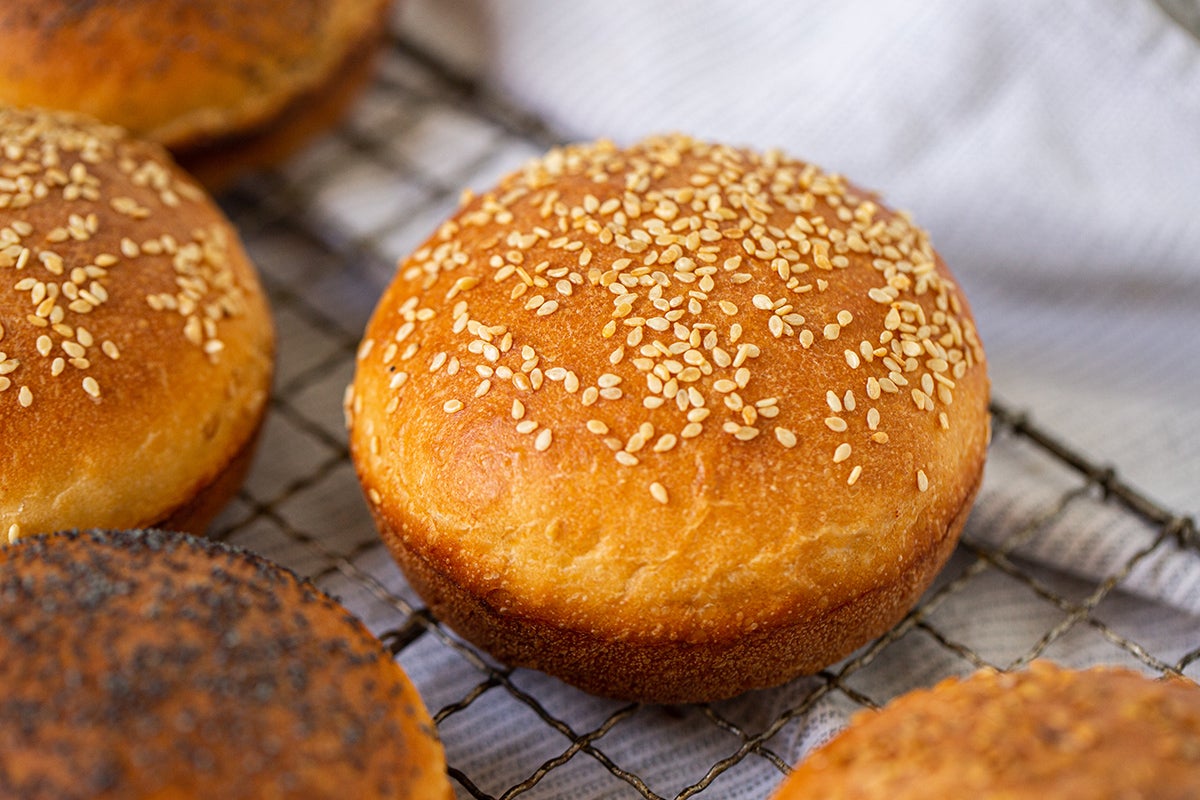
Speaking of slicing — hold off on cutting your burger buns in half until as close to serving as possible. Burger buns will dry out quickly as soon as the interior crumb is exposed.
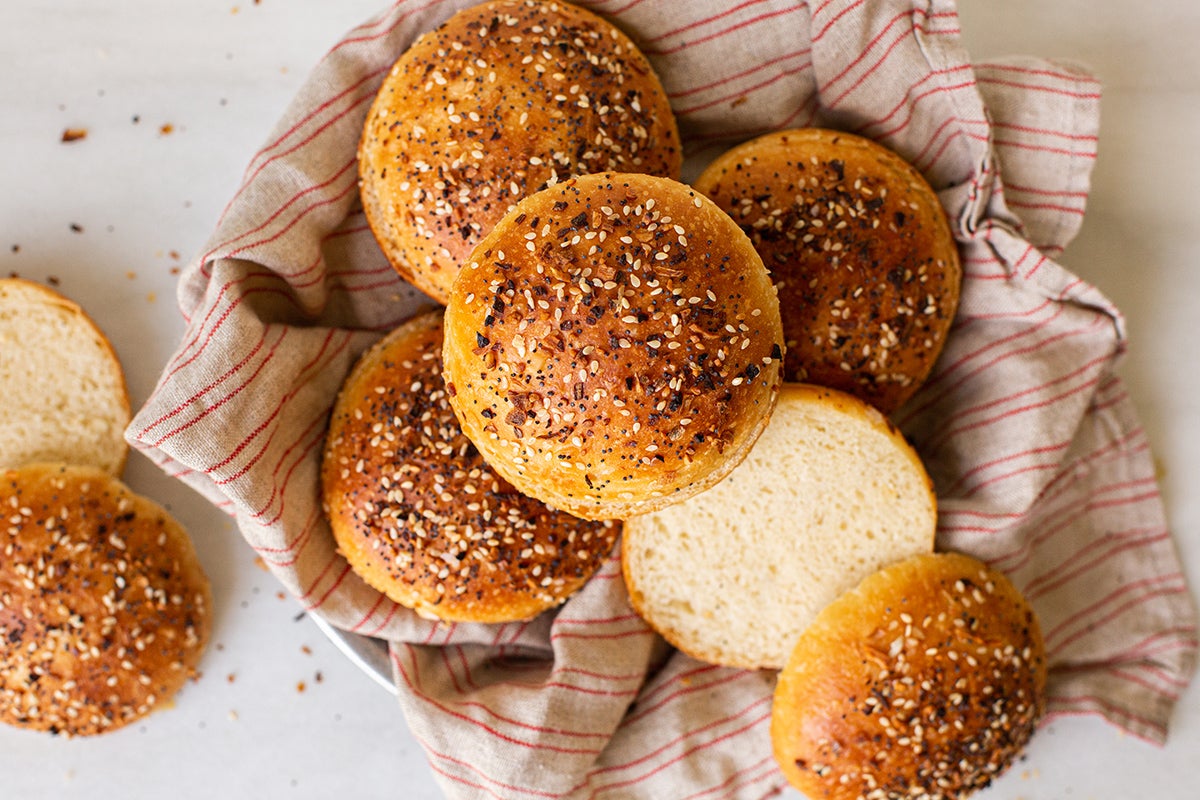
Store your buns in an airtight container at room temperature to keep them soft. Cut in half with a serrated knife just before you’re ready to use them.
End up with leftover buns? You just might have some extras if you use our Hamburger or Hotdog Buns recipe, since it produces a large batch of burger buns.
You can elevate leftovers by brushing the cut halves of the burger buns with melted butter (or mayo — trust me, it works) and griddling them until toasted. The buns will be revived in a glorious, buttery form. You just might want to eat one all on its own — they’re that delicious.
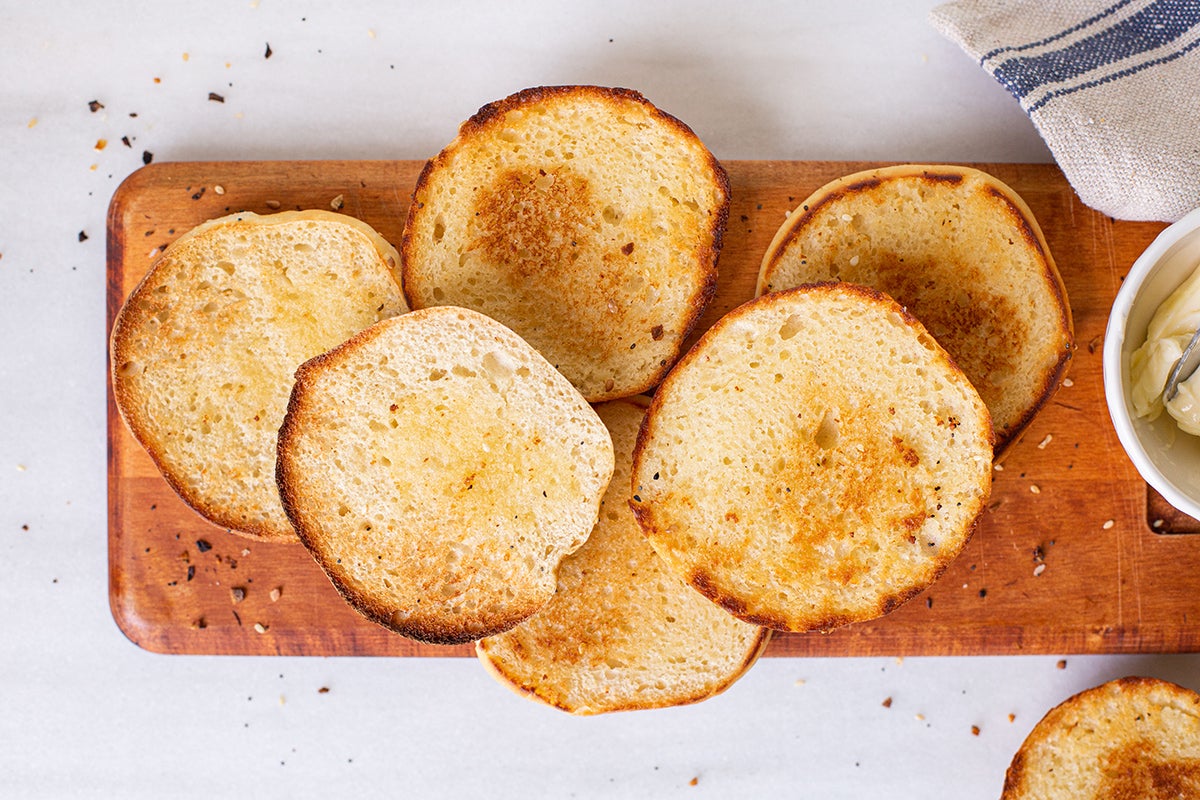
This last tip is one you need to know if you like to plan (and bake) ahead. Homemade burger buns can be frozen at two points in the process to save some time later.
You can follow the instructions outlined in our blog post Freeze and bake if you'd like to freeze unbaked buns. (In short: skip the first rise and go straight to dividing and shaping the buns, then freeze.)
Or you can follow the recipe from start to finish, let the buns cool completely, and then freeze. The buns should be well-wrapped and stored in the freezer for up to a month. If you thaw and then rewarm your homemade burger buns before serving, no one will ever know they were frozen.
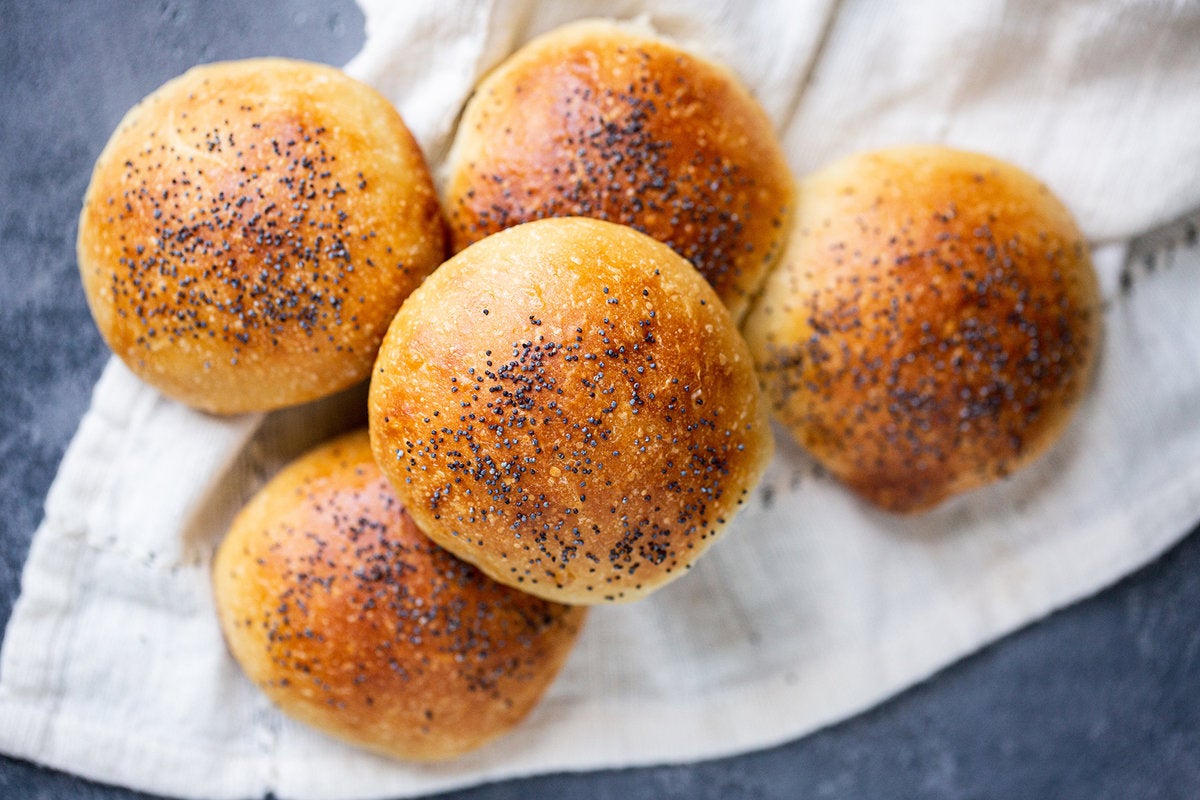
If you’re baking gluten-free, follow the directions in our blog post Gluten-free cookout recipes. You'll learn how to transform our Gluten-Free Dinner Rolls recipe into burger buns that everyone can enjoy.
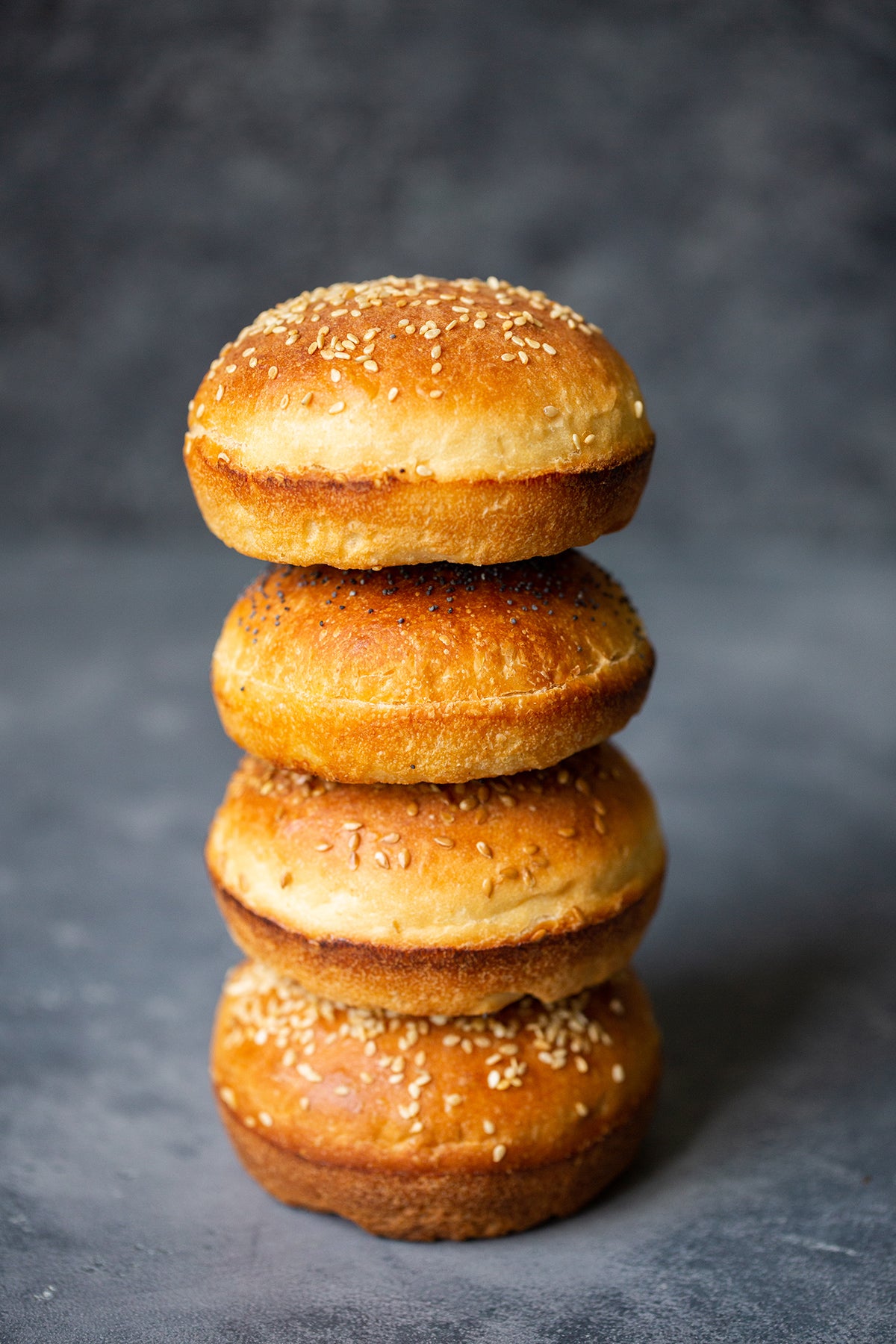
Whether you use your homemade buns for hamburgers, veggie burgers, pulled pork, portobello mushrooms, or any other filling, we’re sure your buns will set your sandwich apart.
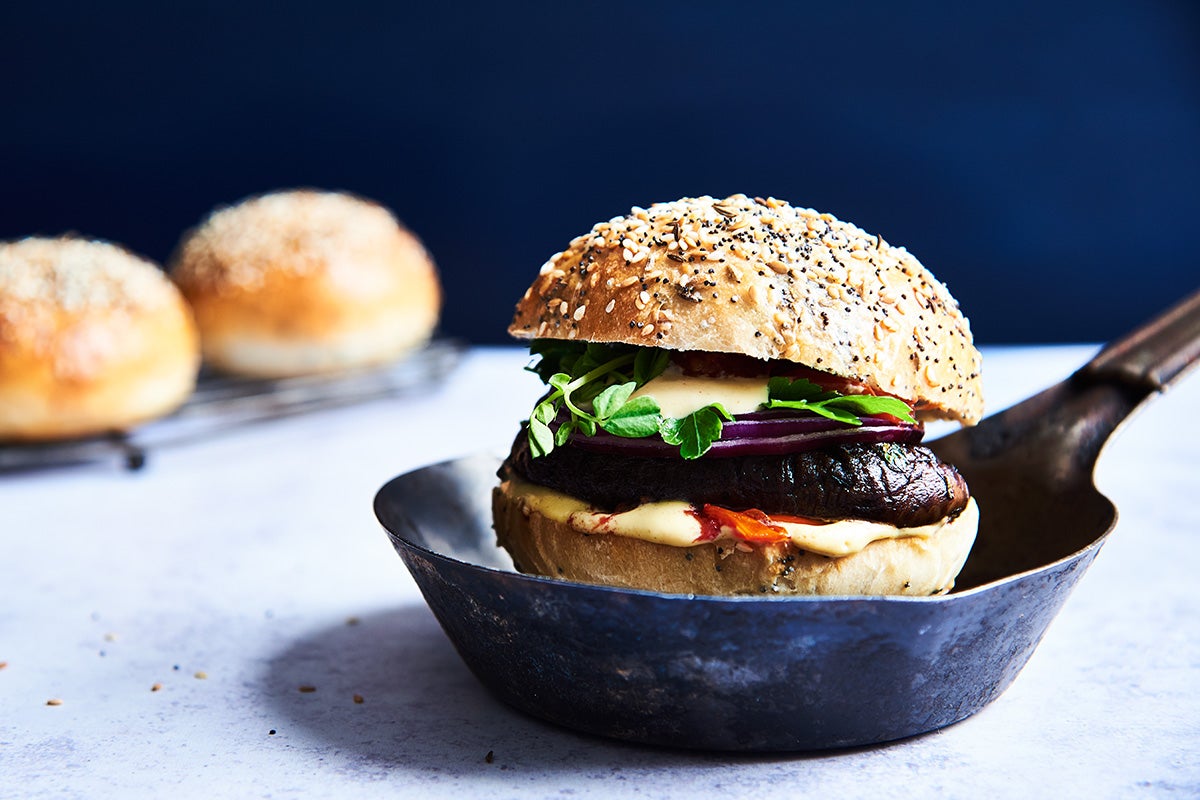
Remember these 10 tips for making the very best homemade hamburger buns. Soon you’ll be the star of the cookout — it's true!
Use our Hamburger or Hotdog Buns recipe for your next cookout (whether it's indoors or out), and rate and review it at the bottom of the recipe page, if you like.
Want to share more? We'd love to hear about your best burger bun baking experiences in the comments, below.
Thanks to Jenn Bakos for taking the photographs for this post.